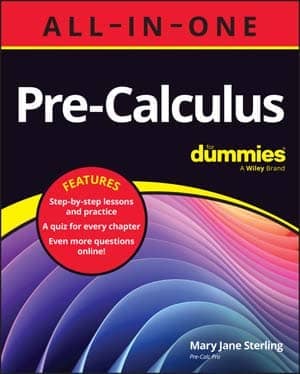If your pre-calculus teacher gives you consecutive terms in a geometric sequence and asks you to identify another term in the sequence, the steps you will follow to find this term are remarkably similar to those for arithmetic sequences. You find the common ratio (not the difference!), you write the specific formula for the given sequence, and then you find the term you're looking for.
An example of a geometric sequence is 2, 4, 8, 16, 32. To find the 15th term, follow these steps:
Find the common ratio, r.
In this sequence, each consecutive term is twice the previous term. If you can't see the common ratio by looking at the sequence, divide any term by the term before it.
Find the formula for the given sequence.
In terms of the formula, a1 = 2 and r = 2. The general formula for this sequence is

which simplifies (using the rules of exponents) to

Find the term you're looking for.
If an = 2n, then a15 = 215 = 32,768.
The formula in this example simplifies nicely because the bases of the two exponents are the same. If the first term and r don't have the same base, you can't combine them.

